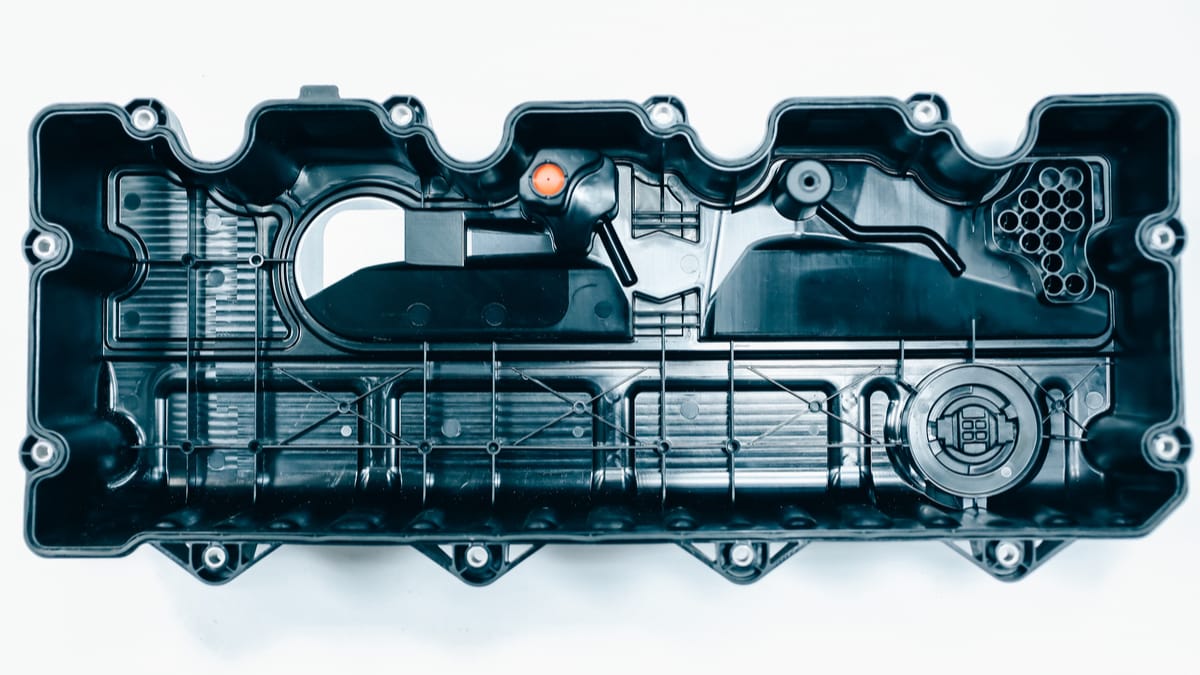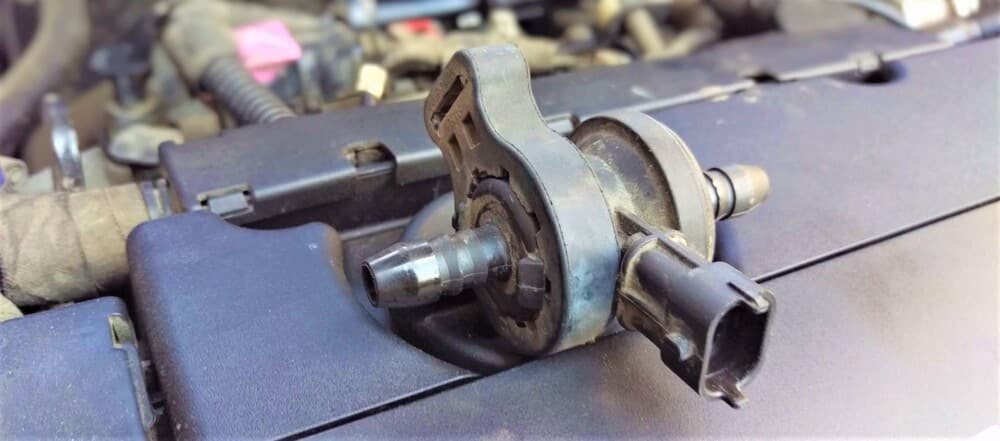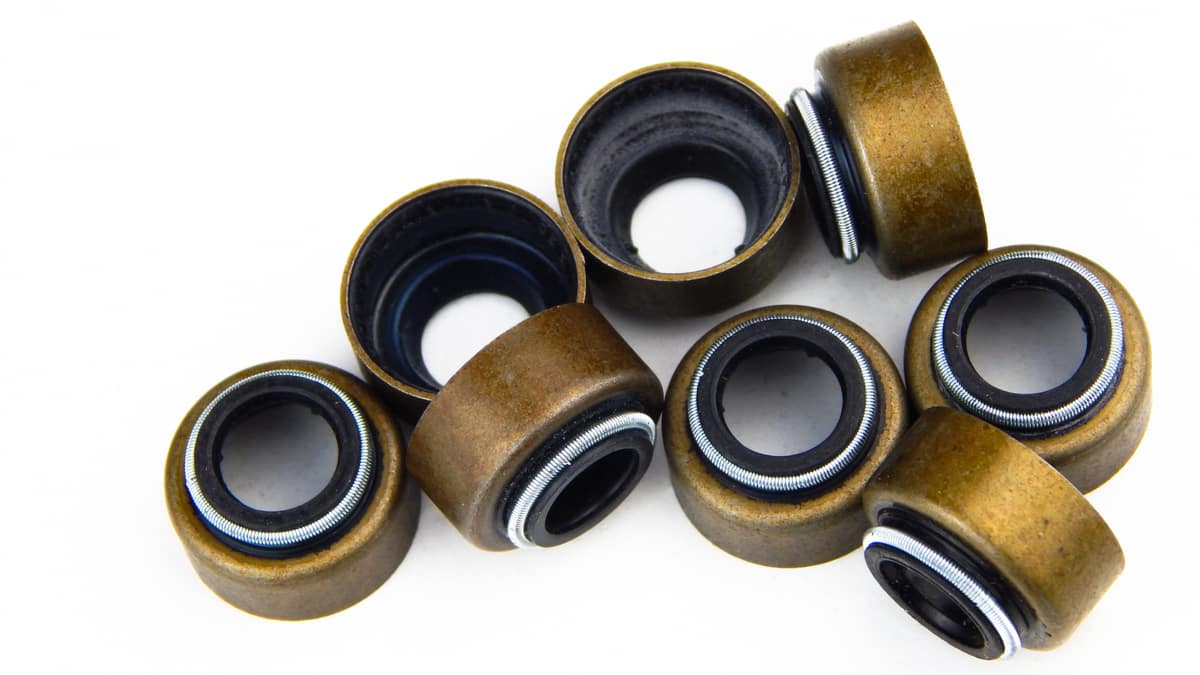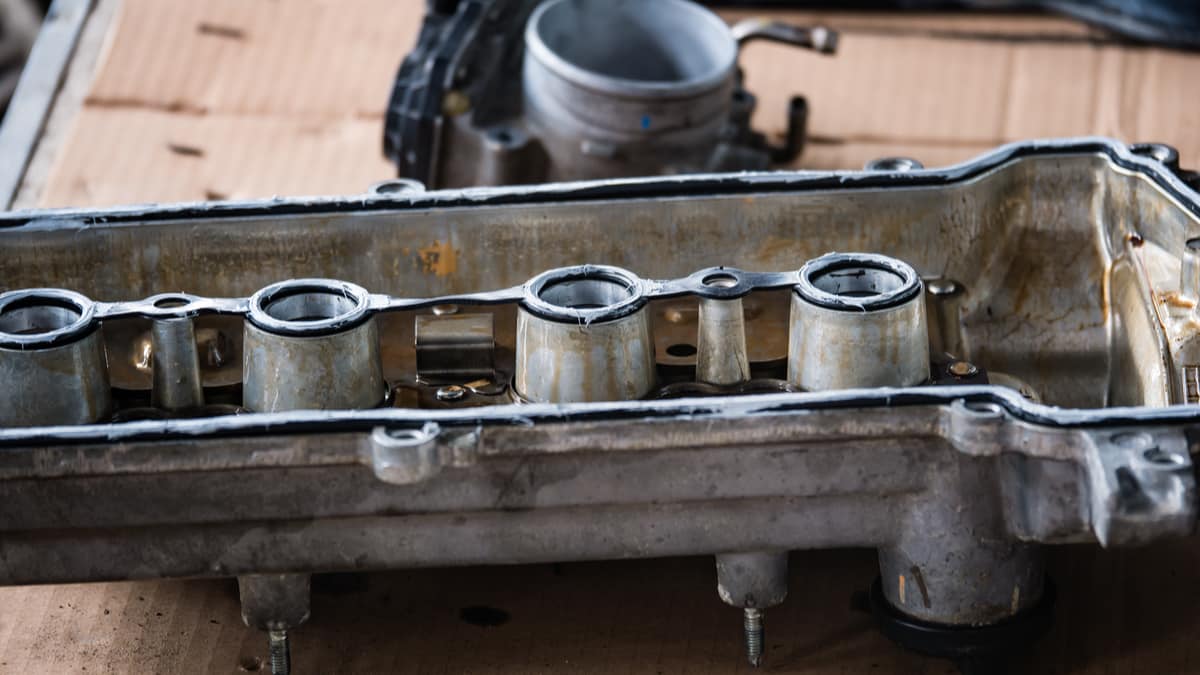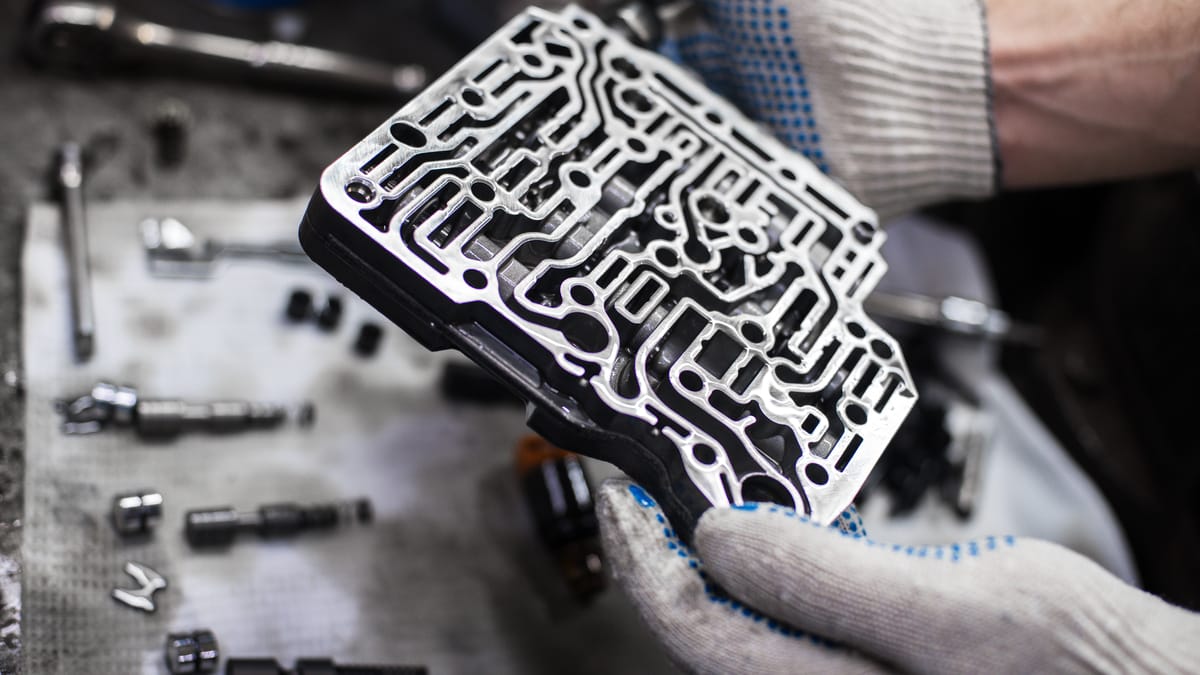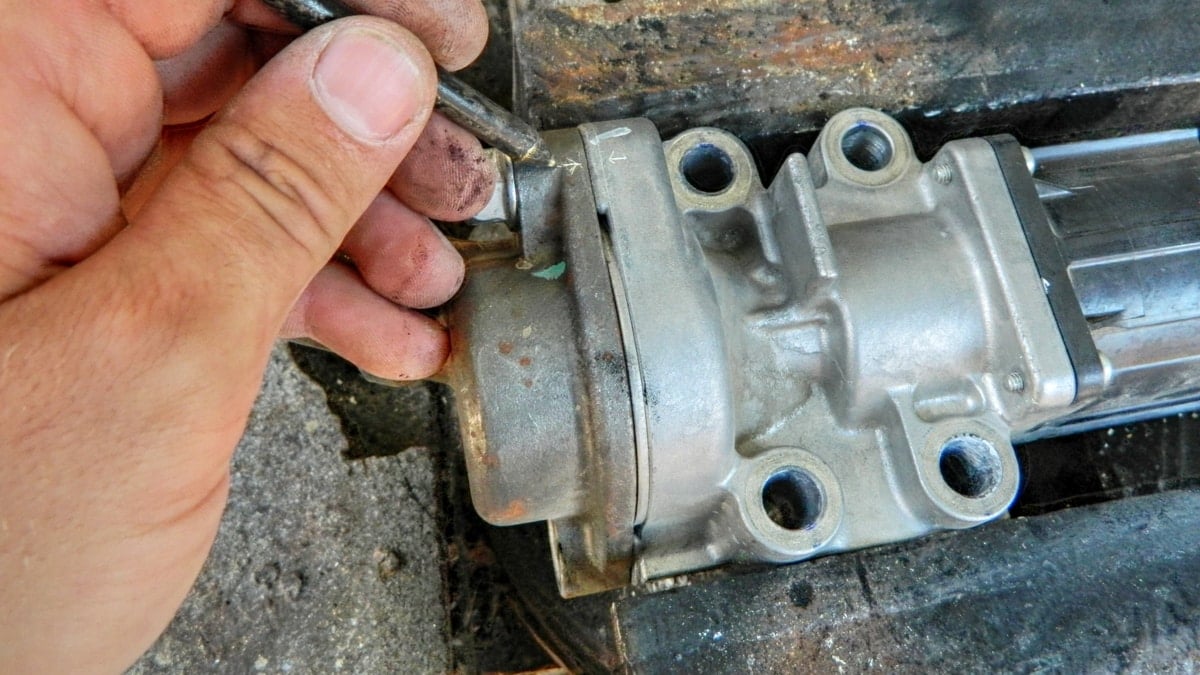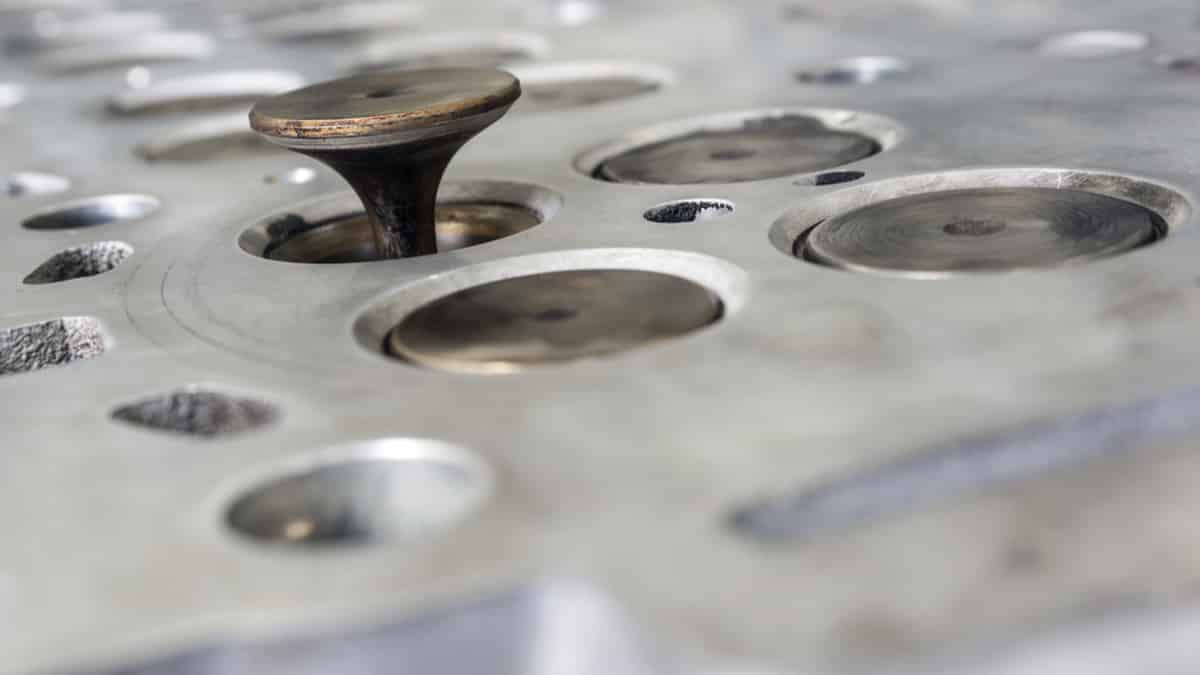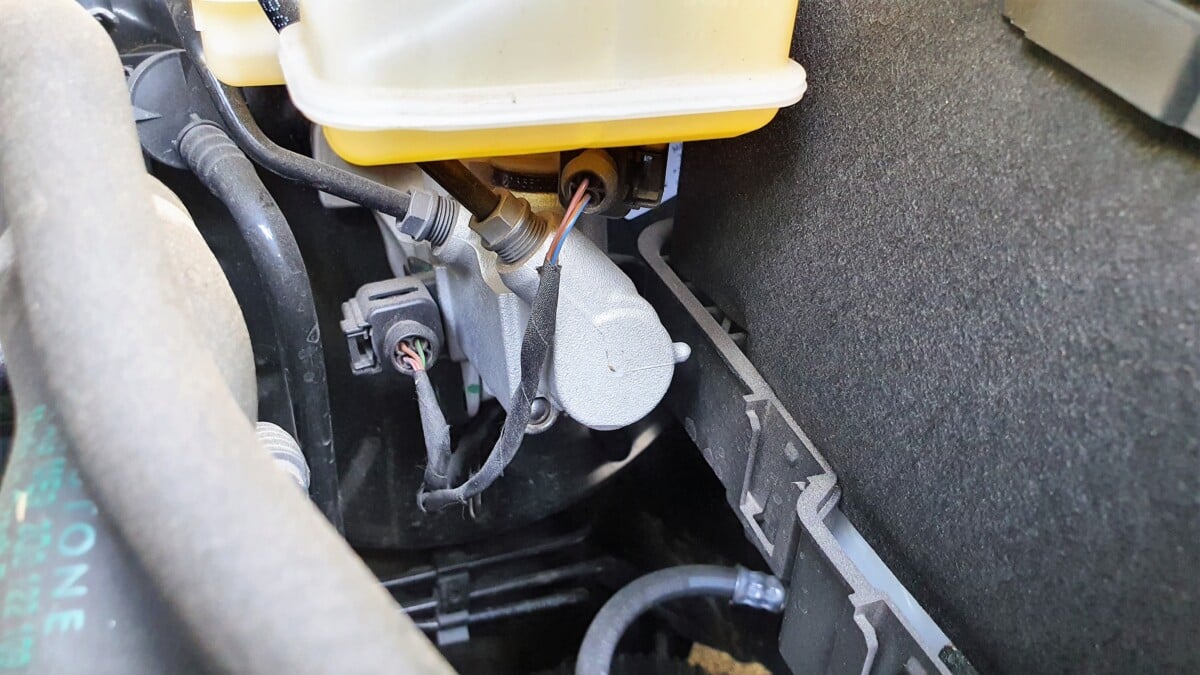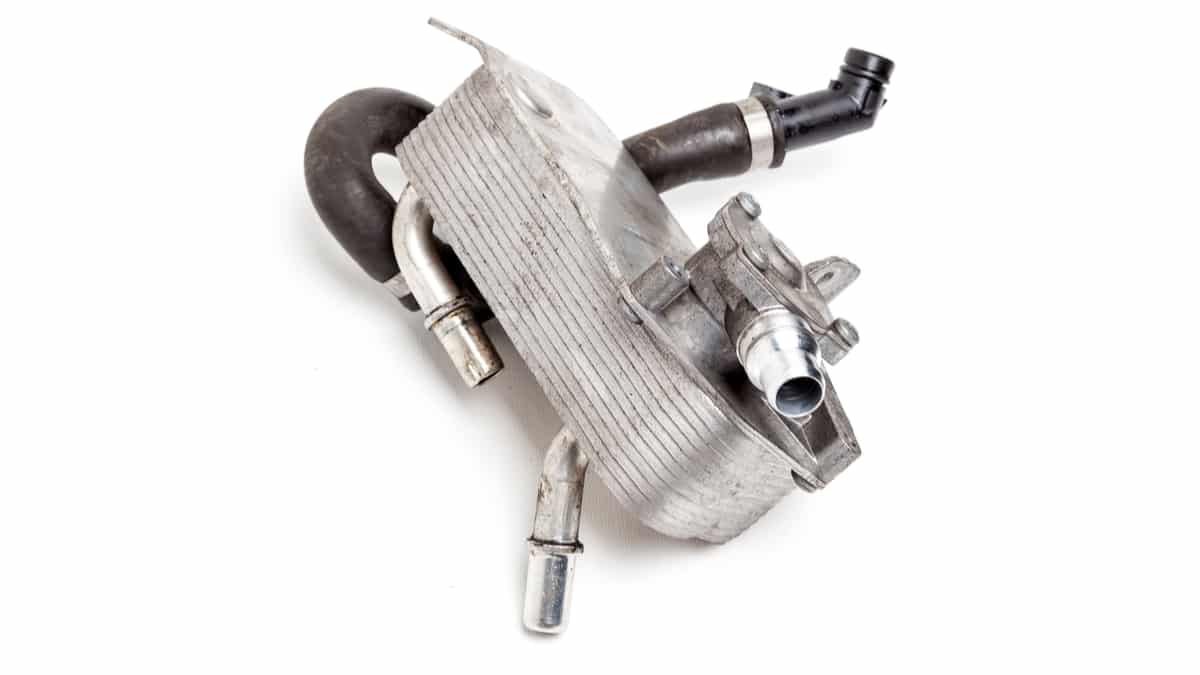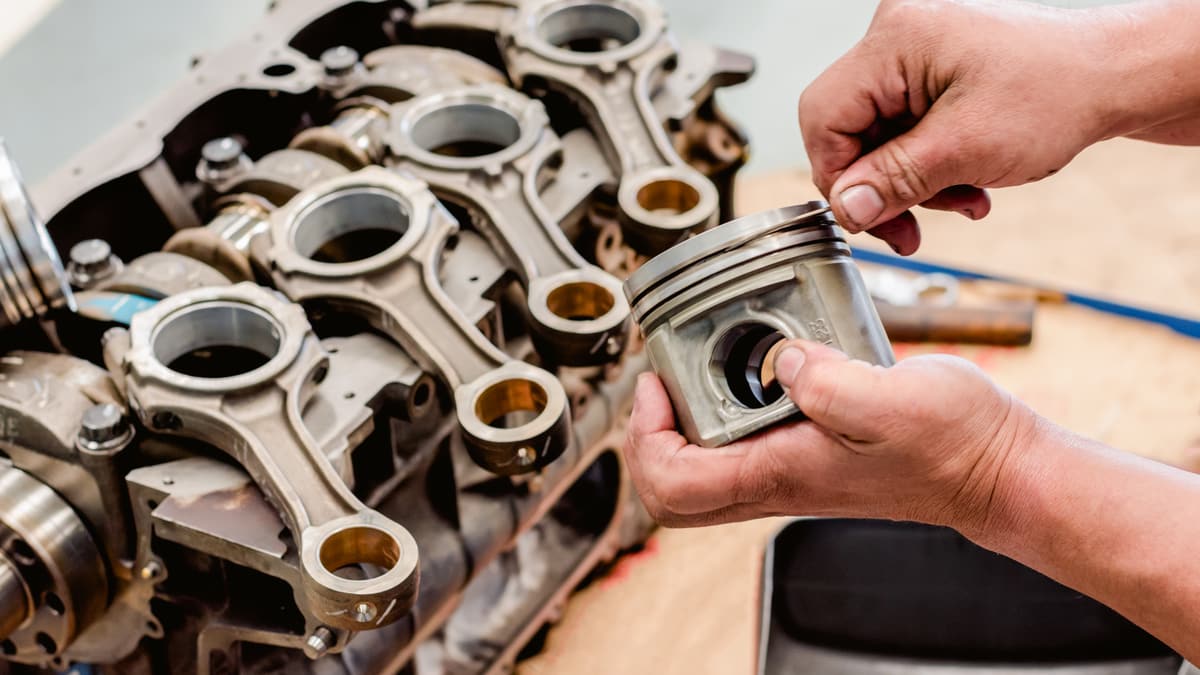Unless you are familiar with the workings of car engines, you have probably never heard of the valve cover. It’s not a part that is talked about or included with regular maintenance, so it can be easily overlooked. However, the valve cover and its gasket have an important role to play. That’s why it’s important to understand the symptoms of a bad valve cover.
In this guide, we cover the things that happen when a valve cover is bad or leaking. We also explain the function and location of the valve cover, as well as show you how to inspect it and illustrate what it might cost to replace it. Finally, we end by answering your biggest questions.
Symptoms Of A Bad Or Leaking Valve Cover
When a valve cover is bad, you may notice an external oil leak. This would also lead to a lower oil level than expected. Depending on where the oil is leaking, you may also smell something burning. This problem can also cause oil in the spark plug wells, a misfiring engine or dashboard warning lights.
Because these issues can occur with other malfunctions as well, it’s important to look at them in greater detail.
1. External Oil Leak
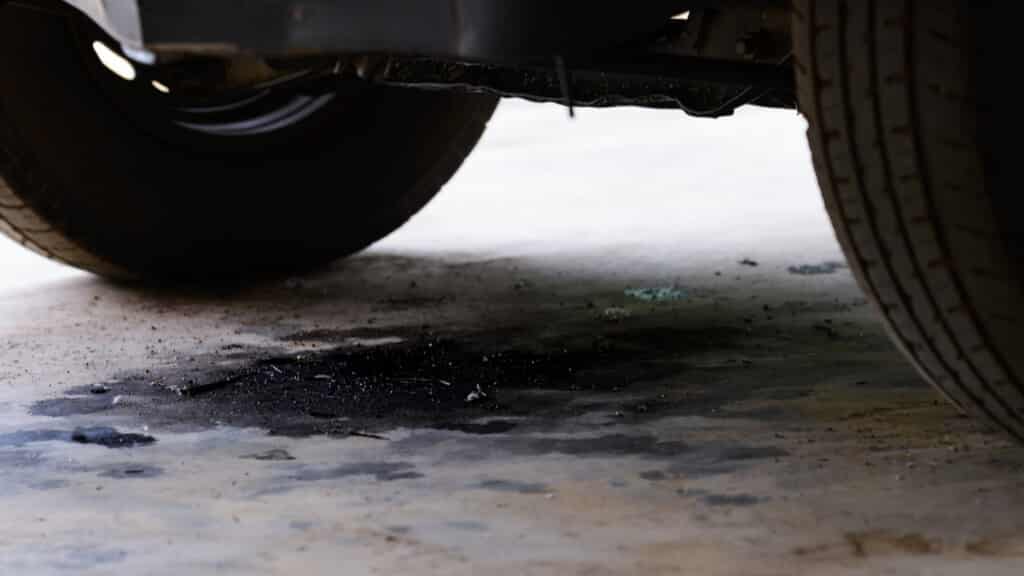
The biggest issue with a bad valve cover is the chance of oil leaks. There are some problems that cause huge puddles of oil on your driveway, but this may not be one of them. Instead, you may only see a small amount of oil seeping through the valve cover, but it’s enough to demonstrate that there’s a problem.
If the valve cover has a large crack or hole in it, you could see much more oil coming out. However, instead of pooling below, it’s likely going to be spraying from the cover.
During a visual inspection of the valve cover, you want to pay special attention to any area that may be missing a bolt or screw. There’s also the chance that there’s a crack in the valve cover, which would have oil coming out of it. We will discuss more about this inspection in a few minutes.
2. Low Oil Level
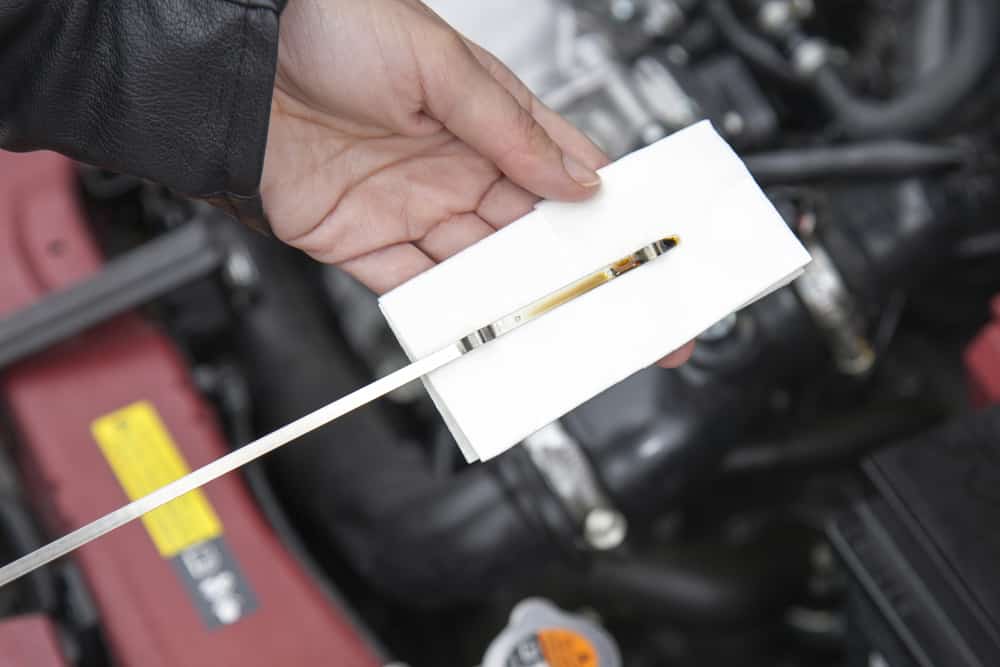
With an oil leak comes a natural drop in the fluid. Depending on how severe the leak is, you may notice the oil level get lower fairly quickly. In this case, you should also be able to spot the leak with ease.
Because your engine needs motor oil to remain lubricated, you don’t want to ever run out or drive with it too low. If you do, the engine could seize and you would need to replace it.
3. Burning Oil Smell

The engine compartment is filled with hot components working hard. If the oil starts to leak out on any of these parts, you may notice a strange burning smell. The oil could be sitting on the hot engine itself or have leaked to the exhaust.
Either way, a burning smell from under the hood should always get your attention. You want to stop driving and figure out what’s going on, so you can prevent a car fire from occurring.
4. Oil In Spark Plug Wells
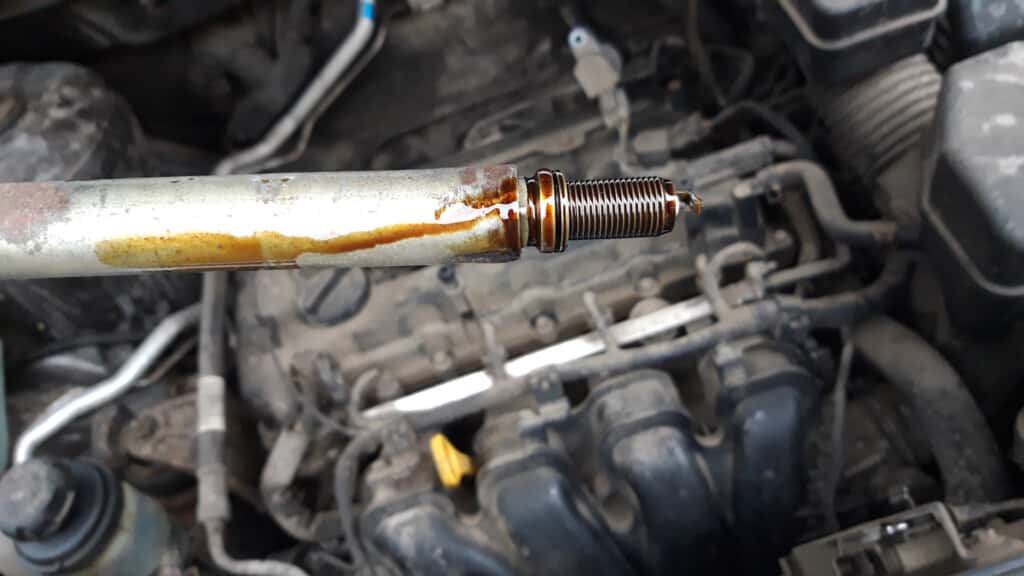
The valve cover sits on the cylinder head to prevent oil from getting into areas where it doesn’t belong. When the valve cover or gasket is bad, oil seeps into the cylinders below, leaving behind oily plugs.
If there’s too much oil on the plugs, the contact between the spark plug and the ignition coil can get weak, resulting in engine misfires which we will talk about now.
5. Misfiring Engine
If oil is leaking into the spark plug wells and fouling occurs, you are going to notice some performance issues. With the inability of the spark plugs to ignite properly, misfiring is sure to follow. Plus, you will notice a rough-running engine.
In extreme situations, the engine may not start at all if the spark plugs can’t be ignited. Either way, you want to have a misfiring engine looked at immediately before you become stranded.
6. Dashboard Warning Lights

The dashboard warning lights are designed to tell you when there’s a problem. Newer vehicles have warning lights for the oil level. If there’s a leak, the low oil level light may come on. This oil warning light tells you that there’s not enough pressure for the engine.
You may also see the Check Engine Light depending on what problems the valve cover is causing. For example, if there’s a misfire, you are likely going to see stored faults for this problem.
What’s The Function Of A Valve Cover?
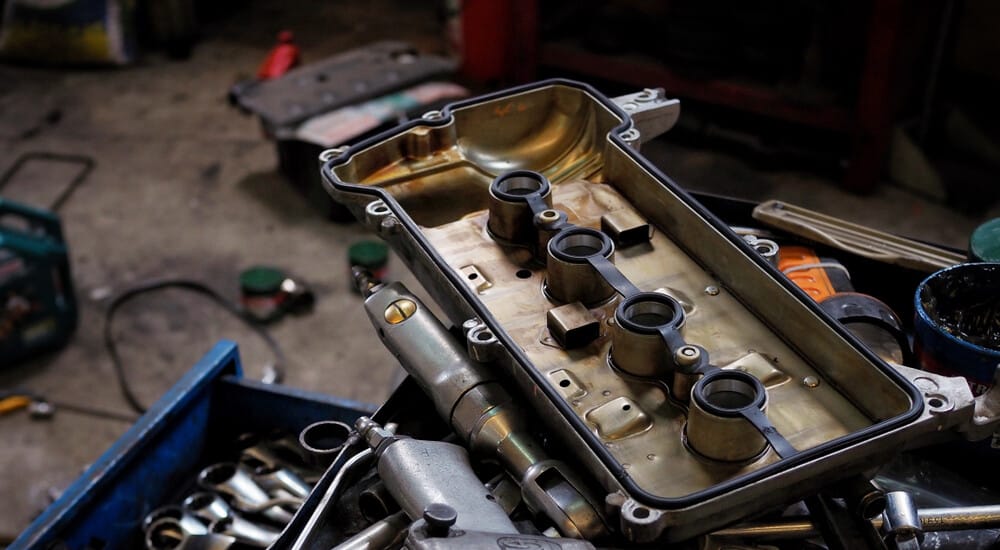
The valve cover is otherwise known as the camshaft cover or rocker arm cover. It’s made from plastic or metal that covers the camshaft and other components.
Because of where it sits, the valve cover offers superior protection to the engine. Not only does it cover the cylinder head from the elements, but it also keeps debris from getting inside. Additionally, the valve cover helps to keep the oil where it belongs.
To create this effective seal, there’s a gasket located between the valve cover and the cylinder head. However, some cars don’t use a gasket at all but seal the cover with RTV silicone. There are also some GM covers that contain an integral PCV orifice.
Where Is The Valve Cover Located?

The valve cover is found on top of the engine. It’s made from metal or hard plastic and it protects the valves and engine components. With most vehicles, there’s a gasket that seals the valve cover to the engine.
The gasket fails more frequently than the valve cover itself, although it’s possible to get cracks in the cover. However, if you need to replace the gasket, you still have to remove the valve cover, so it’s wise to replace it if it looks worn.
How Do You Inspect A Valve Cover?
You don’t need a lot of fancy equipment to diagnose a bad valve cover. In fact, a visual inspection can tell you a lot about the integrity of the cover.
Here are some basic steps to consider.
- Visually inspect the housing for cracks. It can be difficult to find any hairline cracks or pinholes through a visual inspection, but you would be able to notice larger imperfections.
- You can also try to tighten up the bolts on the valve cover. Just make sure you don’t overtighten the bolts, or you could end up with bigger problems. Overtightening can cause aluminum valve covers to crack and steel covers to warp.
- If oil continues to leak after tightening the cover, you can check for leaks with a smoke machine. Connect it to your PCV passages.
- Turn on the machine and watch the smoke come out of the opposite side of the cover.
- To highlight the smoke, use an amber-colored light.
- Plug the side where the smoke is coming out with your finger.
- With the smoke trapped, you will easily be able to spot a leak.
Once you know that the valve cover is leaking, you need to replace it.
How Much Does It Cost To Replace A Valve Cover?
On average, expect to spend $150 to $650 for valve cover replacement. To replace the gasket, you may spend another $40 to $75 on the parts and $50 to $300 on the labor. While you replace the valve cover, it also makes sense to install a new gasket, but the opposite isn’t always true.
If you can’t find any defect in the valve cover, you may not need to replace it with the faulty gasket. This part rarely goes bad unless there is some form of damage done to it.
Unless you are experienced at working with valve covers and gaskets, this may not be a job for you to tackle at home. It can take the better part of an afternoon to finish and does involve working around the car engine.
Can I drive my car with a bad valve cover?
No, you should stop driving whenever there’s an oil leak, especially from the valve cover. When oil is leaking out of the engine, it leaves the motor without the lubrication it needs. Once too much oil is lost, the engine can seize and you will have to replace it, which is a costly repair. A car fire can also occur from the oil sitting on hot engine components.
How serious is a valve cover leak?
It’s very serious. Continuing to let the oil leak opens the door to engine damage if the levels get too low. Additionally, as oil sits on hot engine and exhaust parts, it can start on fire. At the first sign of a leak, you should have it repaired. Otherwise, you could be replacing an engine down the road.
How many hours does it take to replace a valve cover gasket?
It depends on the kind of engine you are working on. If you have a small four-cylinder engine, replacing the valve cover gasket may only take two hours. On the other hand, V-engines can be much more difficult to work on and should normally only be fixed by a mechanic.
Is a valve cover easy to fix?
You can replace a valve cover fairly easily with a four-cylinder engine. At the same time, you want to replace the gasket that sits between the cover and the cylinder head. However, if you have a V-engine, you may do better letting the professionals handle the replacement since these can be so tricky to work on.
How long do valve covers last?
The valve cover is designed to last the lifetime of the vehicle. However, depending on the material and how it’s treated, it could fail prematurely. The valve cover gasket, on the other hand, is only designed to work for eight to 12 years. If it fails before that, the PCV valve might be plugged, causing an excessive amount of pressure on the gasket.
If the valve cover fails or breaks, you are going to be left with a mess. Oil can seep out slowly or push out in a stream. Either way, you don’t want to let the engine get low on oil or you could end up with much bigger problems when the motor seizes and you can’t drive anywhere.
If inspecting and replacing the valve cover seems like too big of a job, reach out to a local repair shop. This is one replacement you want down right, so be sure to read the customer reviews on whatever mechanic you choose. There’s no room for error when working with critical engine components.
Categories: Engine
